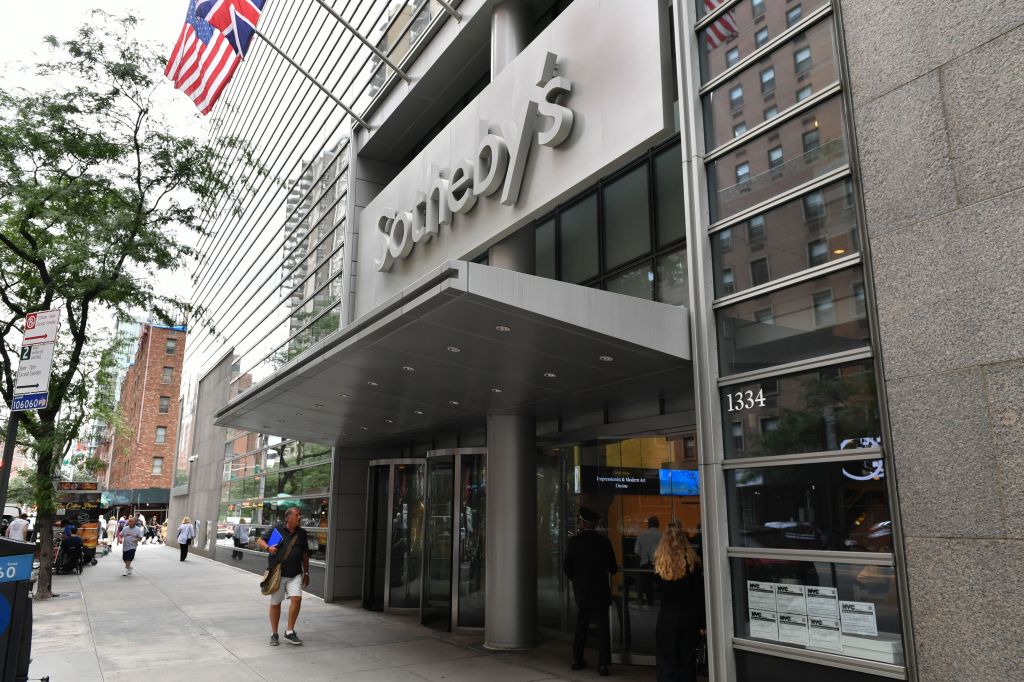[ad_1]
Up until last year, the estate of Ana Mendieta, the famed feminist artist whose works deal with women’s bodies and their relationship to nature, believed that a mysterious photograph of a curvaceous nude sculpted in a limestone grotto had been lost. Then, the estate was surprised to learn that the work had resurfaced—in a preview catalogue for a sale at Sotheby’s, about which the estate alleges it wasn’t informed.
In a new lawsuit filed in the Southern District Court of New York on March 2, Mendieta’s estate accuses the auction house and the work’s previous owner, a Georgia man named Edward Meringolo, of refusing to return the photograph, which it says was unaccounted for during the inventory of works believed to be in Mendieta’s possession at the time of her death in 1985. The suit alleges that Sotheby’s failed to confirm factual details related to the work’s provenance, and that it is unclear how Meringolo came into possession of the work when he consigned it to the house.
“When the Estate of Ana Mendieta inventory was conducted after the artist’s death, we realized that this photograph was missing and hoped that it would resurface and be returned to us,” the estate said in a statement to ARTnews. “It is regrettable that we have to pursue a legal avenue to recover the work, but the Estate is dedicated to protecting and supporting the artist’s legacy.”
The Mendieta estate claims that “the customary proof of provenance via gift or sale” was never provided by Meringolo, who, according to a letter from Sotheby’s that was submitted as evidence in the estate’s lawsuit, was given the work by art historian Rebecca D. Ballenger. Ballenger had featured the photograph—titled Guanaroca (Esculturas Rupestres [First Woman Rupestrian Sculptures]) and dated 1981—in a 1983 exhibition she organized at a California State University gallery in Los Angeles. The photograph is related to a body of work known as “Esculturas Rupestres,” for which Mendieta paid homage to Taíno and Ciboney goddesses; similar works are now held by the Brooklyn Museum and the Guggenheim Museum, both in New York, and the Yale University Art Gallery in New Haven, Connecticut.
About two years later, the artist fell from the window of her New York apartment, and Minimalist sculptor Carl Andre, her partner, was charged with second-degree murder. (He was acquitted in 1988.) After her death, the estate “believed that [Guanaroca] was in the possession of Carl Andre, or that it would resurface.”
According to the suit, in 2019, the New York gallery that represents Mendieta’s estate, Galerie Lelong & Co., discovered that the photograph was headed to auction in a photography sale at Sotheby’s. Galerie Lelong & Co. reached out to Sotheby’s, and the house allegedly told the gallery that Meringolo had bought the work from Ballenger when the art historian was selling the contents of her house in 2018. Meringolo allegedly consigned the work to Sotheby’s that same year.
The suit casts doubt on this narrative. “Mendieta kept meticulous records including the correspondence she received and records of sales or gifts made,” the suit claims, and no mention of Mendieta’s having gifted the work to Ballenger is included. The estate alleges that it is also unclear how Meringolo discovered the sale of Ballenger’s holdings, as “no evidence” was provided to explain it.
The work had been given a $60,000–$90,000 estimate, according to documentation related to the sale’s preview catalogue. Guanaroca, however, was pulled from the photography sale before it started. Three other works by Mendieta were auctioned in that sale.
“This is an ownership dispute between the estate and the consignor of the work,” Sotheby’s said in a statement. “Sotheby’s is merely a third-party stakeholder in this dispute and will comply with any decision of the court.” A lawyer for Meringolo declined to comment.
Mendieta’s estate has been known to be litigious when it comes to the artist’s work. In 2018, the estate sued Amazon Studios, alleging that a film it was releasing, Suspiria, included imagery that hewed too closely to Mendieta’s work. The suit was settled for an undisclosed sum.
[ad_2]
Source link

